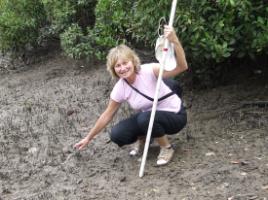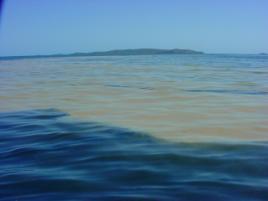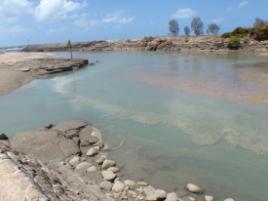Climate change smells 'fishy' for Capricornia
Published on 26 August, 2010
Climate change could lead to increases in sea scum blooms in Capricornia, according to a CQUniversity researcher.
Sea scum or sea sawdust, scientifically known as Trichodesmium, is the blue-green algae that washes up on the beaches and causes that unpleasant ‘fishy' smell during Spring and Summer.

Mary-Anne Jones is researching how climate change will affect local waterways.PhD student Mary-Anne Jones is conducting a study into the likely consequences of climate change to four local estuaries: Corio Bay, Ross Creek, the Causeway Lake and Cawarral Creek.
Ms Jones said study findings suggest that the climate change predictions of rainfall decline, increase in temperatures and greater evaporation rates will lessen freshwater flow to these estuaries and lead more often to poorly-flushed estuarine zones and increased prevalence of these blue-green algae at the coast.
"Our findings suggest that the loss of flow through the Fitzroy will reduce the supply of silica to the coast and this will likely diminish diatoms, the good algae, and increase populations of blue-green algae.

Sea dust sprawls across Keppel Bay last year.
"Given that diatoms form the basis of the coastal food web, we could also see an effect on inshore fisheries."


